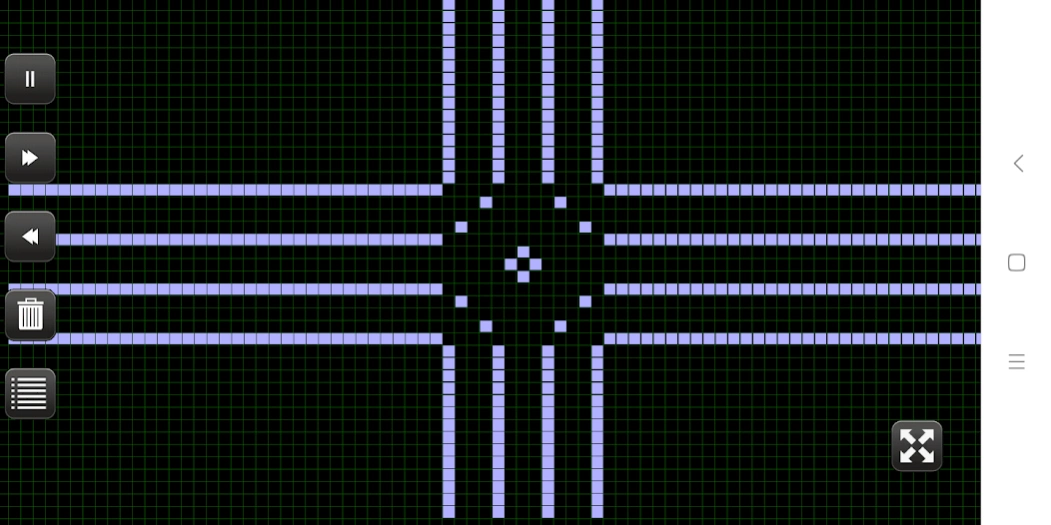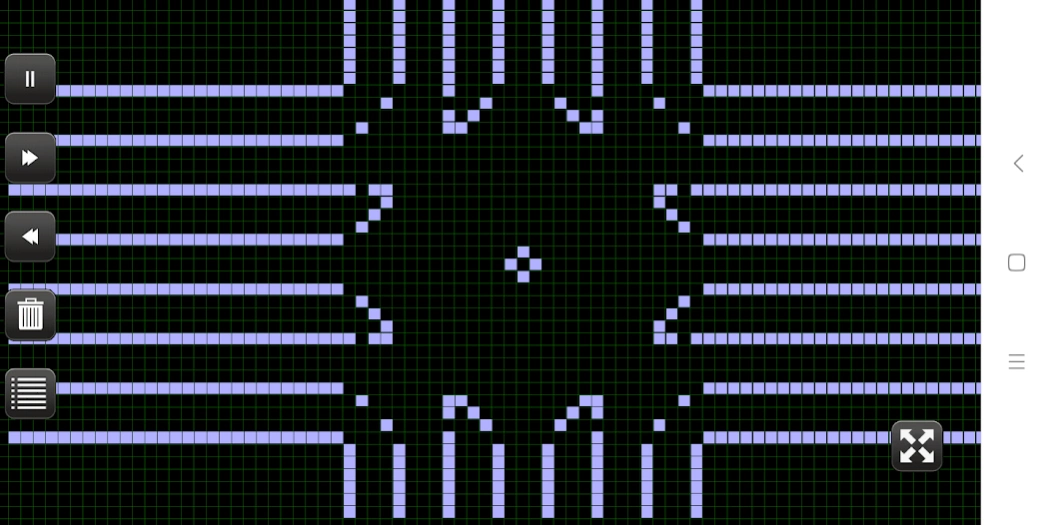Game of Life 1.0
Continue to app
Free Version
Publisher Description
Game of Life - The Game of Life is a cellular automaton devised by Dr John Conway in 1970.
The Game of Life, also known simply as Life, is a cellular automaton devised by the British mathematician John Horton Conway in 1970.
The game is a zero-player game, meaning that its evolution is determined by its initial state, requiring no further input. One interacts with the Game of Life by creating an initial configuration and observing how it evolves, or, for advanced players, by creating patterns with particular properties.
Rules
The universe of the Game of Life is an infinite, two-dimensional orthogonal grid of square cells, each of which is in one of two possible states, alive or dead, (or populated and unpopulated, respectively). Every cell interacts with its eight neighbours, which are the cells that are horizontally, vertically, or diagonally adjacent. At each step in time, the following transitions occur:
1. Any live cell with fewer than two live neighbours dies, as if by underpopulation.
2. Any live cell with two or three live neighbours lives on to the next generation.
3. Any live cell with more than three live neighbours dies, as if by overpopulation.
4. Any dead cell with exactly three live neighbours becomes a live cell, as if by reproduction.
The initial pattern constitutes the seed of the system. The first generation is created by applying the above rules simultaneously to every cell in the seed; births and deaths occur simultaneously, and the discrete moment at which this happens is sometimes called a tick. Each generation is a pure function of the preceding one. The rules continue to be applied repeatedly to create further generations.
In late 1940, John von Neumann defined life as a creation (as a being or organism) which can reproduce itself and simulate a Turing machine. Von Neumann was thinking about an engineering solution which would use electromagnetic components floating randomly in liquid or gas.This turned out not to be realistic with the technology available at the time. Stanislaw Ulam invented cellular automata, which were intended to simulate von Neumann's theoretical electromagnetic constructions. Ulam discussed using computers to simulate his cellular automata in a two-dimensional lattice in several papers. In parallel, Von Neumann attempted to construct Ulam's cellular automaton. Although successful, he was busy with other projects and left some details unfinished. His construction was complicated because it tried to simulate his own engineering design.
Motivated by questions in mathematical logic and in part by work on simulation games by Ulam, among others, John Conway began doing experiments in 1968 with a variety of different 2D cellular automaton rules.[3] Conway's initial goal was to define an interesting and unpredictable cell automaton. Thus, he wanted some configurations to last for a long time before dying, other configurations to go on forever without allowing cycles, etc. It was a significant challenge and an open problem for years before experts on cell automatons managed to prove that, indeed, Conway's Game of Life admitted of a configuration which was alive in the sense of satisfying Von Neumann's two general requirements. While the definitions before Conway's Life were proof-oriented, Conway's construction aimed at simplicity without a priori providing proof the automaton was alive.
Conway chose his rules carefully, after considerable experimentation, to meet these criteria:
1.There should be no explosive growth.
2.There should exist small initial patterns with chaotic, unpredictable outcomes.
3.There should be potential for von Neumann universal constructors.
4. The rules should be as simple as possible, whilst adhering to the above constraints.
Many patterns in the Game of Life eventually become a combination of still lifes, oscillators, and spaceships; other patterns may be called chaotic. A pattern may stay chaotic for a very long time until it eventually settles to such a combination.
About Game of Life
Game of Life is a free app for Android published in the Kids list of apps, part of Games & Entertainment.
The company that develops Game of Life is orion games. The latest version released by its developer is 1.0.
To install Game of Life on your Android device, just click the green Continue To App button above to start the installation process. The app is listed on our website since 2019-08-03 and was downloaded 1 times. We have already checked if the download link is safe, however for your own protection we recommend that you scan the downloaded app with your antivirus. Your antivirus may detect the Game of Life as malware as malware if the download link to com.oriongame.gameoflife is broken.
How to install Game of Life on your Android device:
- Click on the Continue To App button on our website. This will redirect you to Google Play.
- Once the Game of Life is shown in the Google Play listing of your Android device, you can start its download and installation. Tap on the Install button located below the search bar and to the right of the app icon.
- A pop-up window with the permissions required by Game of Life will be shown. Click on Accept to continue the process.
- Game of Life will be downloaded onto your device, displaying a progress. Once the download completes, the installation will start and you'll get a notification after the installation is finished.



